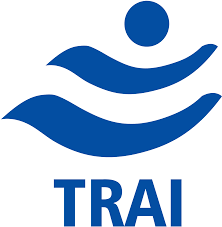TRAI Releases Draft Manual to Standardize Rating of Properties for Digital Connectivity
TRAI has invited feedback from stakeholders, industry experts, and the general public. Comments must be submitted in the prescribed format provided in Annexure-I of the draft manual.

- Country:
- India
In a significant move to bolster digital infrastructure in the country, the Telecom Regulatory Authority of India (TRAI) has unveiled the draft manual for the assessment of property ratings for digital connectivity. This release, dated 13th May 2025, is part of the implementation framework under the “Rating of Properties for Digital Connectivity Regulations, 2024”, which was officially notified on 25th October 2024. The objective is to streamline how digital readiness of buildings is assessed, facilitating a robust and uniform methodology for all stakeholders including Digital Connectivity Rating Agencies (DCRAs), Property Managers (PMs), and service providers.
The draft manual is accessible on the TRAI website at www.trai.gov.in and is open for public feedback until 2nd June 2025, with counter-comments accepted up to 9th June 2025.
Importance of In-Building Digital Connectivity
The draft manual emerges in a time when digital connectivity has transitioned from being a luxury to a necessity. With the increasing dependence on 4G and 5G networks for high-speed data services, ensuring seamless indoor coverage has become imperative. These newer generation mobile technologies operate on higher frequency bands which, while capable of delivering faster data rates, are highly susceptible to attenuation due to walls and other structural components of buildings.
According to industry estimates, most data consumption occurs indoors, underscoring the pressing need for strong digital infrastructure within residential, commercial, and public buildings. Inadequate indoor connectivity can hinder not just user experience but also the digital transformation of services like smart homes, telemedicine, remote learning, and e-governance.
Regulatory Evolution: From Recommendations to Implementation
TRAI's journey towards a connectivity-focused building ecosystem began with the release of its recommendations to the Government on “Rating of Buildings or Areas for Digital Connectivity” on 20th February 2023. These recommendations were aimed at creating an environment where Digital Connectivity Infrastructure (DCI) becomes an integral part of development planning—whether for new constructions or retrofits.
Building on these recommendations, TRAI released the Rating of Properties for Digital Connectivity Regulations, 2024, which set the regulatory foundation. The draft manual now acts as the implementation guide—the rulebook that turns theory into practice.
Objectives and Utility of the Draft Rating Manual
The draft manual aims to:
-
Enable Uniformity: Standardize the assessment methodology to ensure consistent evaluations across properties and regions.
-
Empower Stakeholders: Offer clear guidance to DCRAs, PMs, and service providers for fair and structured assessments.
-
Enhance Property Value: Help tenants, buyers, and investors make informed choices based on connectivity ratings, potentially increasing the value of well-rated properties.
-
Promote Collaboration: Encourage co-creation of DCI through a self-sustainable model involving all stakeholders.
Key Assessment Parameters
The manual outlines a comprehensive rating system based on critical components of digital infrastructure. Properties will be evaluated based on:
-
Fiber Readiness: Availability and capacity of fiber-optic infrastructure.
-
Mobile Network Availability: Strength and coverage of 4G and 5G networks within the premises.
-
In-Building Solutions (IBS): Deployment of DAS (Distributed Antenna Systems) or small cells to amplify signals.
-
Wi-Fi Infrastructure: Availability, speed, and coverage of Wi-Fi services.
-
Service Performance: Parameters such as data throughput, latency, uptime, and user satisfaction.
This multi-dimensional framework ensures a holistic evaluation, helping bridge the gap between digital infrastructure planning and actual user experience.
Benefits for Stakeholders
-
For Property Developers and Managers: The ratings can be leveraged as a unique selling proposition, especially in urban and tech-centric markets.
-
For Tenants and Homebuyers: Ensures informed decisions based on measurable digital infrastructure indicators.
-
For Telecom Operators: Helps identify areas requiring infrastructure investment or enhancement.
-
For Policymakers: Aids in creating data-driven urban development and connectivity improvement policies.
Public Participation and Contact Information
TRAI has invited feedback from stakeholders, industry experts, and the general public. Comments must be submitted in the prescribed format provided in Annexure-I of the draft manual. The feedback will shape the final version of the manual, expected to serve as a cornerstone document for India’s digital future.
For queries or further clarification, stakeholders can contact:
Shri Tejpal Singh Advisor (QoS-I), TRAI 📧 Email: adv-qos1@trai.gov.in 📞 Tel: +91-11-20907759
Towards a Digitally Empowered India
The release of the draft manual for property rating underlines TRAI's commitment to a digitally inclusive and forward-looking India. By fostering a transparent and uniform rating system, the Authority is taking a proactive step toward building digital resilience into the very fabric of urban and rural development. As connectivity becomes as essential as water and electricity, initiatives like these are pivotal in shaping smarter, more connected, and more sustainable communities.










